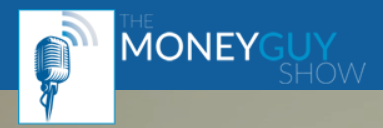Are Roth Assets the Apex Predator of Your Wealth Building?
Investors Gaining Independence w/ Physical Silver | Andy Schectman
Tightening the Taps: A Macro-Economic Update
Step back and watch the confusion in the heart of the U.S. monetary system.
Because while the nation remains captivated by ongoing political drama, a quiet transformation is taking place…
All concealed within the corridors of the Federal Reserve.
Notably, the U.S. Money Supply is experiencing a sustained contraction for the first time since at least 1960, with over $1 trillion being withdrawn.
These developments are signaling a shift in the fiscal landscape of a country heavily reliant on cheap debt and loose fiscal policies.
Let that sink in for a moment.
Because we’ve got a few visuals you need to see, to believe…
Money Supply: Tightening the Taps
A country that has loaded itself to the gills on cheap debt and loose fiscal policy is finally starting to see the tightening of the fiscal taps, so to speak.
Living in a Coup with Massive Election Rigging & War – Martin Armstrong
By Greg Hunter’s USAWatchdog.com
Legendary financial and geopolitical cycle analyst Martin Armstrong was forecasting “chaos” in 2023, and that’s exactly what we got. His cycle work says don’t look for it to get better anytime soon. Armstrong explains, “We are in the midst of a coup. We have all these people who have been neocons for 30 years. Even Ron Paul said recently that the neocons have been waging war for 30 years and have not won a one single one. This is what they live for. Look at the clip of Lindsey Graham saying this is the best money we ever spent killing Russians.
How To Survive the U.S. National Debt Crisis
Robotics and Automation: The Next Trillion-Dollar Industry
Nations Around the World Are Dumping the U.S. Dollar
By Teeka Tiwari
In the mid-1960s, under the leadership of President Lyndon B. Johnson, the U.S. government went on an incredible spending spree.
Between 1960 and 1965, spending tripled from $40.9 billion to $122.7 billion, largely due to the Vietnam War.
Johnson also launched his Great Society initiative during the decade.
It was an ambitious series of legislation and programs with the goal of ending poverty, reducing crime, abolishing inequality, and improving the environment.
In total, the U.S. spent $120 billion fighting the war in Indochina, or about $1 trillion in today’s dollars.
Many Great Society programs such as Medicare live on today over 50 years later, with an estimated total running cost of over $16 trillion.
But in the 1960s, the U.S. dollar was still pegged to gold. That meant other nations could redeem their dollar reserves for gold.
The Bitcoin Boom: Why The New Blackrock Spot BTC ETF Matters
Patriot Radio News Hour 06/21/2023 .... PART 1
$1.5 Trillion of Debt Due By 2025 - The Looming Commercial Real Estate Crisis
Is the S&P 500 Setting a Trap for Investors Like the Dot-Com Bust of 2000?
By Pam and Russ Martens
Following the dot-com mania of the late 90s, the Nasdaq reached a closing high of 5,048.62 on March 10, 2000. The Nasdaq then proceeded to lose 78 percent of its value over the next 2-1/2 years. It reached a closing low of 1,114.11 on October 9, 2002.
There is mounting evidence that the S&P 500 is in a similar bubble today – this time fostered by Wall Street hyperbole and FOMO (Fear of Missing Out) around Artificial Intelligence (AI) boosting big gains at mega tech companies.
Headlines are sprouting up at various news outlets, touting that the S&P 500 is in a new bull market. But, in fact, almost all of the gains in the S&P 500 Index year-to-date have come from just seven stocks: Apple (ticker AAPL), Alphabet (GOOG), Amazon (AMZN), Meta Platforms (formerly Facebook, ticker META), Nvidia (NVDA), Microsoft (MSFT), and Tesla (TSLA).
In a Very “Hawkish Skip,” the Fed Keeps Rates at 5.25% Top of Range, But Sees Two More Rate Hikes this Year. QT Continues
By Wolf Richter for WOLF STREET.
Amid massive expectations of a “pivot” or a “pause,” or at worst, a “hawkish skip” followed by one rate hike, the FOMC decided on a “very hawkish skip”: It kept its policy rates unchanged, with the upper end at 5.25%. With this “skip,” the Fed has hiked by 500 basis points in 15 months. The vote was unanimous.
But it sees two more 25-basis-point rate hikes this year, as per its newly updated median projections in its “dot plot.” This turns today’s decision into a “very hawkish skip,”
Federal funds rate target at a range between 5.0% and 5.25%.
Interest it pays the banks on reserves at 5.15%.
Interest it charges on overnight Repos at 5.25%.
Interest it pays on overnight Reverse Repos (RRPs) at 5.05%.
Primary credit rate at 5.25% (what banks pay to borrow at the “Discount Window”).
Europe’s Retroactive Recession - John Rubino
Stocks Turn Positive, With More Gains to Come
By Brett Eversole
Investing can be as complicated – or as simple – as you make it...
If you want to, you can comb through books about the investing greats. You can learn what makes them tick and how they did what they did.
Then, it's time to roll up your sleeves and get to work. You might do deep-dive research into dozens of companies. You could spend hours picking apart their businesses and scrutinizing their financial statements.
And you'd be doing all that work... while hoping to get an edge over thousands of professional investors who are doing the same thing.
That's the hard way. Sure, it can lead to incredible results. But you can also do darn well by keeping things simple... and sticking with the trend.
All those pros doing the deep research are setting prices. But when prices get moving, they tend to keep moving.













